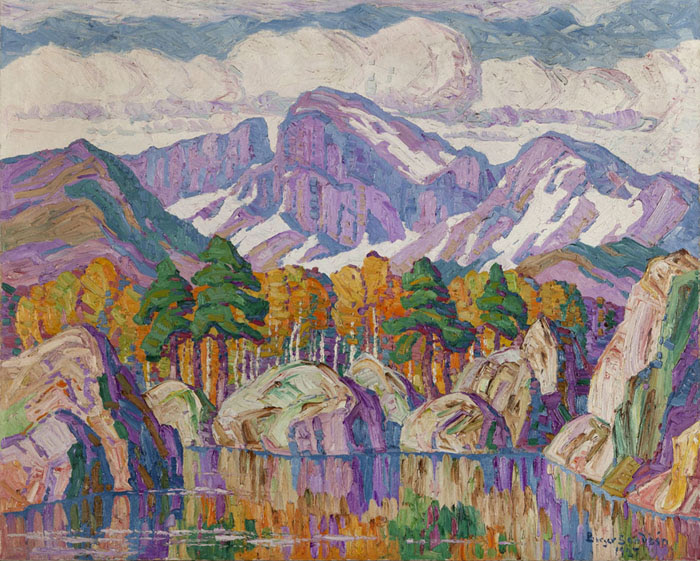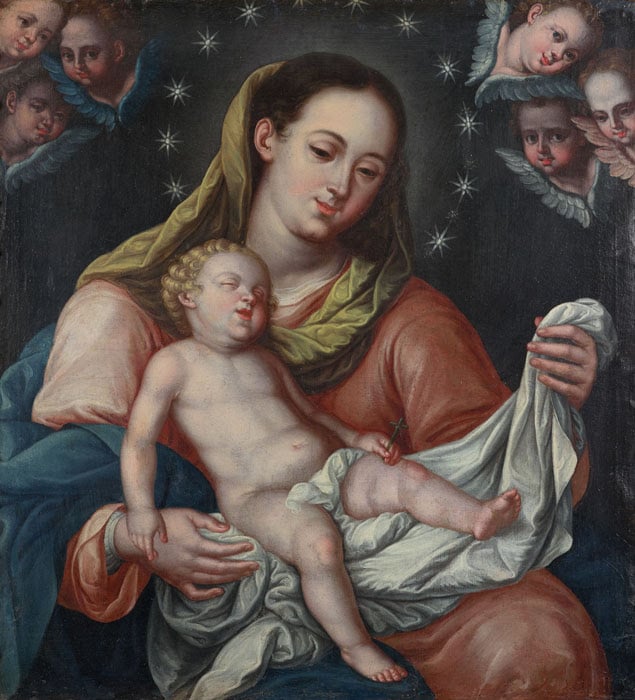
During 2017, the Denver Art Museum (DAM) strategically enhanced the breadth and depth of its collection through a variety of major acquisitions, both purchases and gifts from generous museum supporters. This ongoing refinement and expansion of the museum’s collection exemplifies the DAM’s enduring commitment to maintain a diverse collection that reflects the community and provides invaluable ways for audiences to learn about cultures from around the world.
A Dramatic Shift
The Native arts department made a significant addition to its holdings of works by First Nations artist Kent Monkman (Fish River band Cree/Irish). “The Scream” represents a dramatic shift for Monkman, whose earlier work often utilized humor to defuse tension when presenting challenging subjects. This painting — anything but humorous — is horrifying, powerful and haunting.
In a monumental work that draws inspiration from two of Peter Paul Rubens’ seventeenth-century “Massacre of the Innocents” paintings, Monkman depicts First Nations children being forcibly taken from their families and sent to residential schools. The effects of these traumatic experiences are still felt today through language loss, culture change, and disruptions in the transmission of cultural knowledge.

“A Mountain Symphony,” On Public View For the First Time Since 1927
The Petrie Institute of Western American Art purchased a painting by Sven Birger Sandzén (American, b. in Sweden, 1871–1954) with strong Colorado ties. After moving from Europe to Kansas, Sandzén visited Colorado every summer between 1908 and 1952. In this painting (above), Longs Peak crowns the colorful visual “symphony” of Sandzén’s interpretation of Rocky Mountain National Park. The vibrant palette, broad brush strokes, and sculptural quality of the paint surface reflect the influence of late nineteenth- and early twentieth-century modernist techniques, many of which Sandzén absorbed while studying in Paris.

Tang Dynasty Ceramic Horse
Ceramic horse sculptures are frequently found in Tang Dynasty tombs. Modeled in a variety of poses, with or without riders, some are fully glazed, while others are painted in various colors. Horses played significant roles in Tang Dynasty military, hunting, and sports as well as providing transportation along the Silk Road.
Imported breeds from Central Asia areas were particularly favored as they were more robust and speedy than the indigenous Chinese horses. They were greatly admired by the Tang court and the aristocracy, and most of the ceramic horses were modeled on these imported horses. This elegant example was bequeathed to the Asian art department by Bernadette Berger.

The Virgin and Child
Active in Lima, Peru between 1770 and 1815, Pedro Diaz is considered the most important painter of the late colonial period in Peru. Celebrated in his day, Diaz excelled in religious images and portraits.
This early work, which depicts the Virgin Mary and Child surrounded by small angels, demonstrates the influence of Diaz’s mentor Cristobal Lozano, who a few decades earlier renovated the painting tradition in Lima by skillfully blending French-inspired repertoires and palettes with the more severe style of late seventeenth-century Spanish painting.
Learn more about these acquisitions and the rest of the collection of the Denver Art Museum here.
Sign up to receive Fine Art Today, the weekly e-newsletter from
Fine Art Connoisseur magazine.







[…] Scream is part of the permanent collection of the Denver Art Museum. They purchased it in 2017 and in their description of the painting they mention that Kent Monkman was inspired by a work by Peter Paul Rubens called Massacre of the […]
[…] The actual painting The Scream is huge 7 feet by 11 feet. It was purchased by the Denver Art Museum in […]